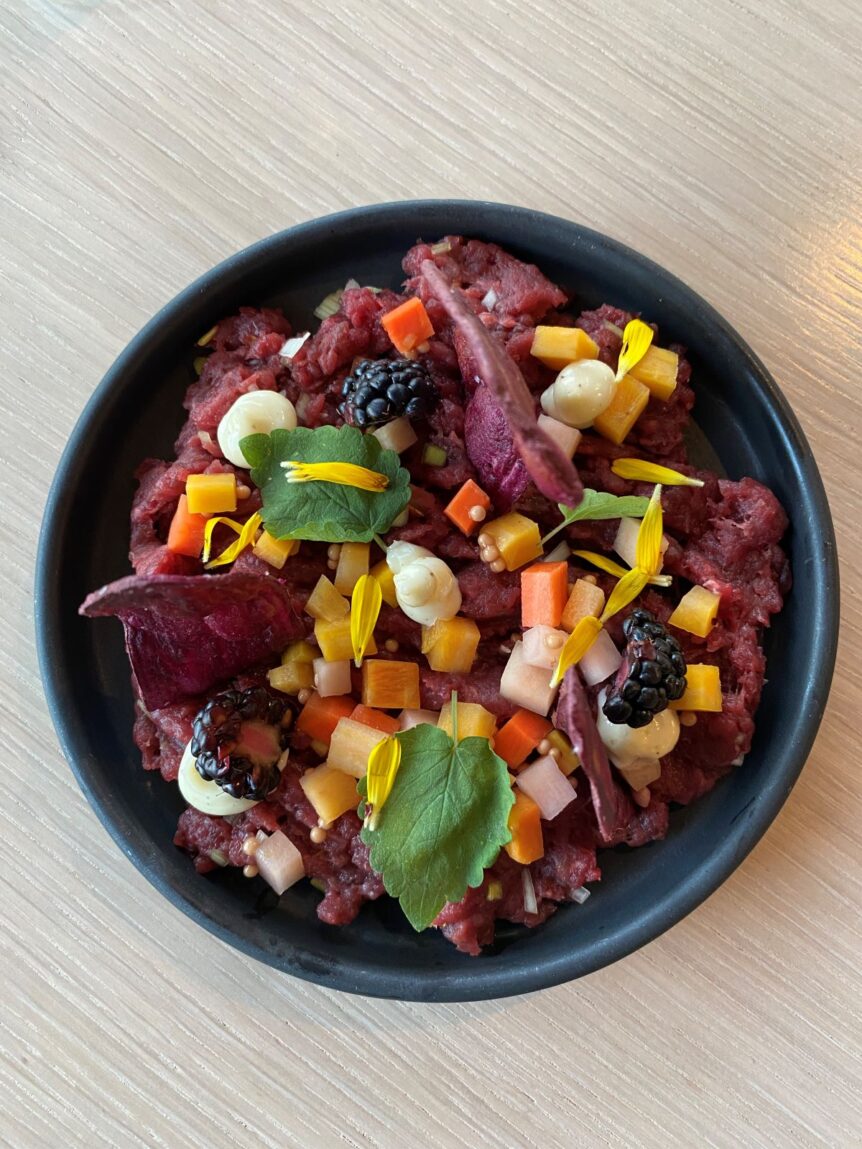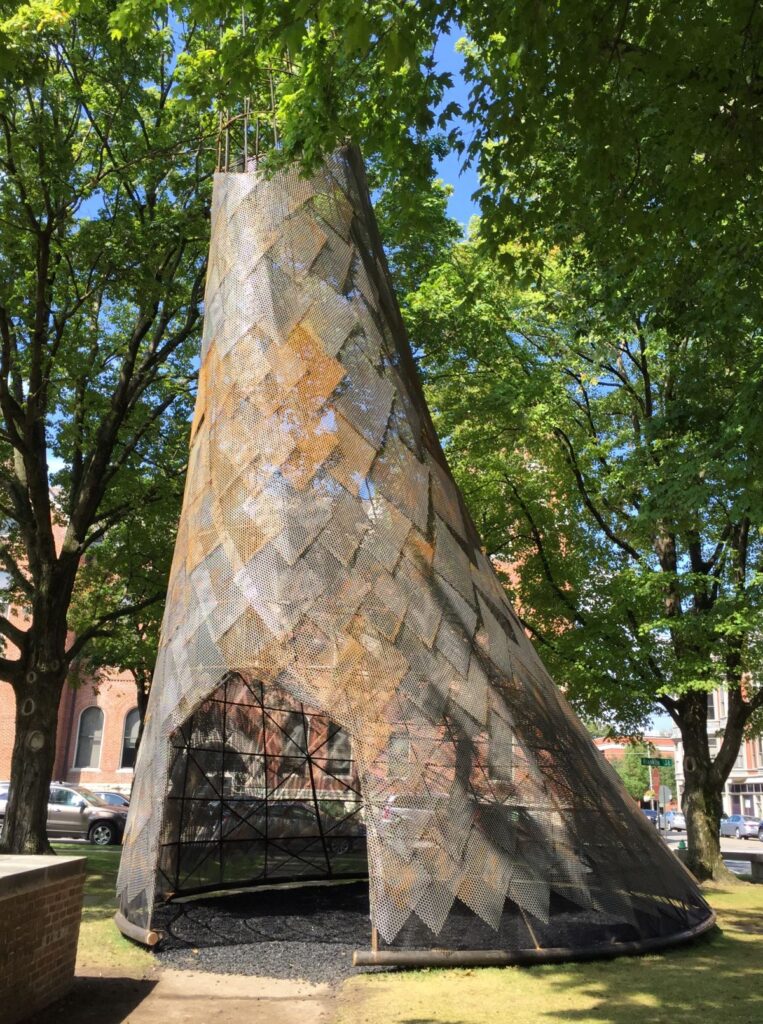
I’m not going to qualify this: Art of Native America, the permanent exhibition at the Metropolitan Museum of Art that arrived in 2018, remains the most significant cultural event of our time, freeing our imaginations from old myths about Indianness; opening them to the intense vitality of more than fifty cultures; and, in a number of fruitful ways, continuing to connect those cultures to the present.
That last point is vital because, as the provocative cultural critic David Treuer never ceases to point out, Indians are vexed by pastness: “We exist as modern Americans and Indians, but how much is left. . . . At what point do we cease being Indians, and become simply descended from Indians?”
Treuer is not alone in asking and, as we will see, answering that question. Reservation Dogs, the nimble television series about four Native American teenagers who think they want to leave the res, does so in every episode while also disrupting the clichés of conventional TV. Not surprisingly, it took a season or so for critics to catch up to the show’s frame-breaking, heartbreaking brilliance.
The work of architect Chris Cornelius, who grew up on the Oneida Indian Reservation, is similarly nimble with the anxieties of tradition. As part of the 2017 Exhibit Columbus design program in Columbus, Indiana, the town made famous by modern architecture (Eliel Saarinen, Eero Saarinen, I. M. Pei, and others) and landscape design (Dan Kiley), Cornelius designed a pavilion made of rebar and metal scales in homage to the original occupants of the land. “I wanted to replicate the process of making a wigwam, not make an actual wigwam,” Cornelius explains of a structure that, symbolically or not, swoops forward toward an Eliel Saarinen church.
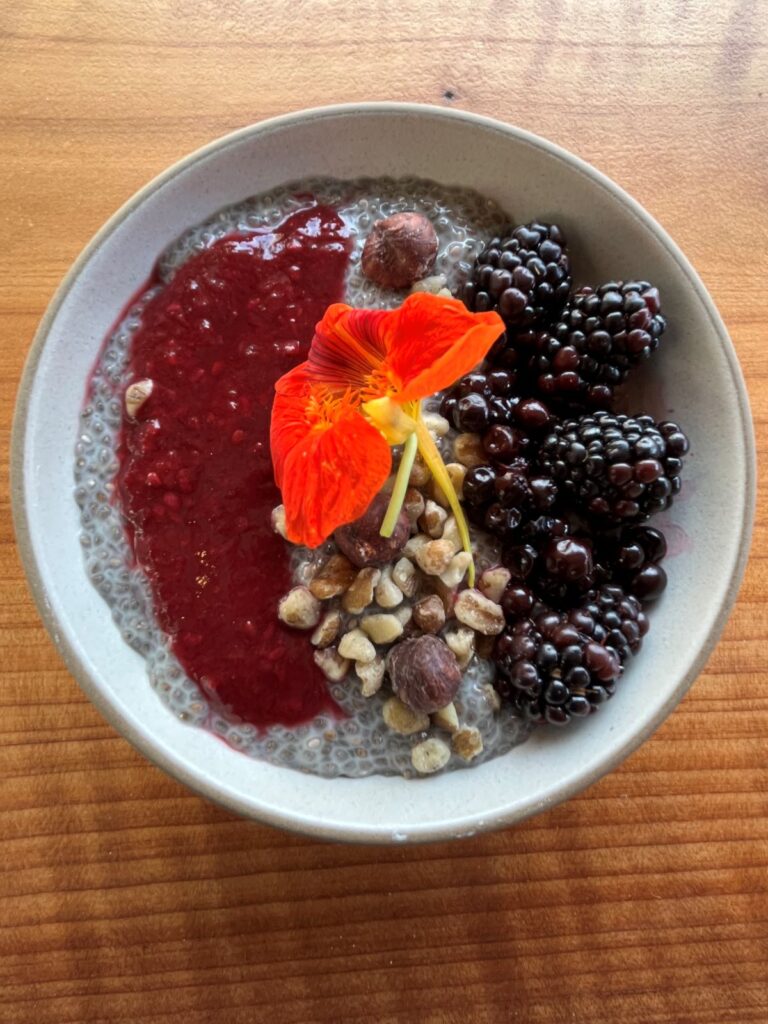
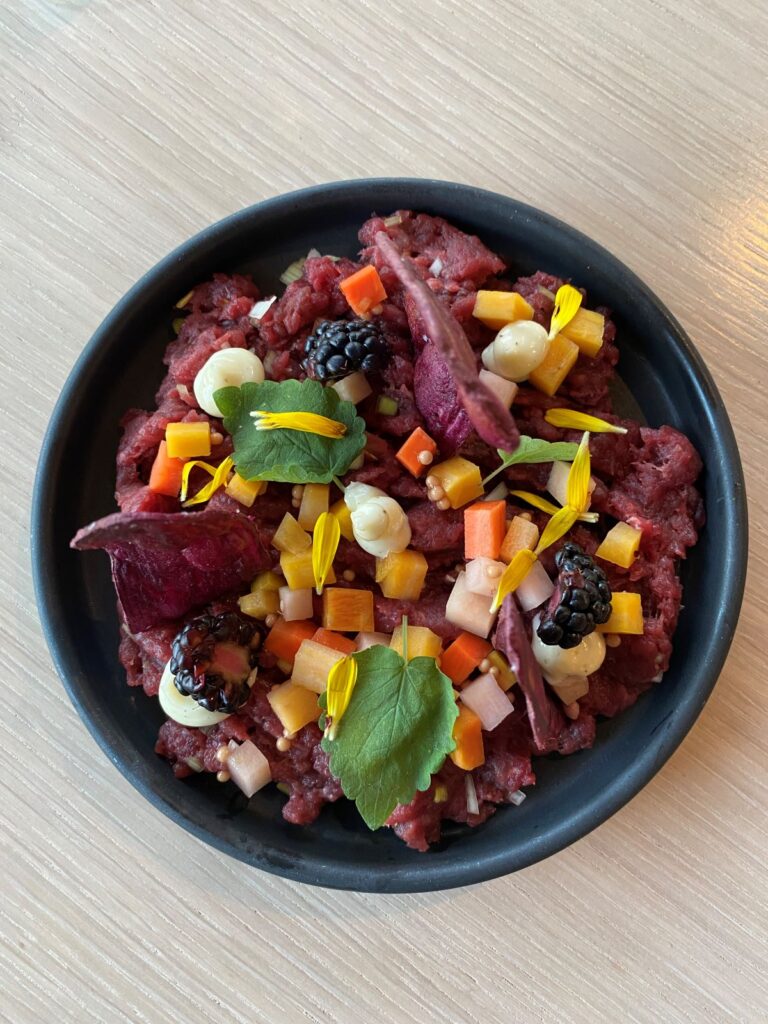
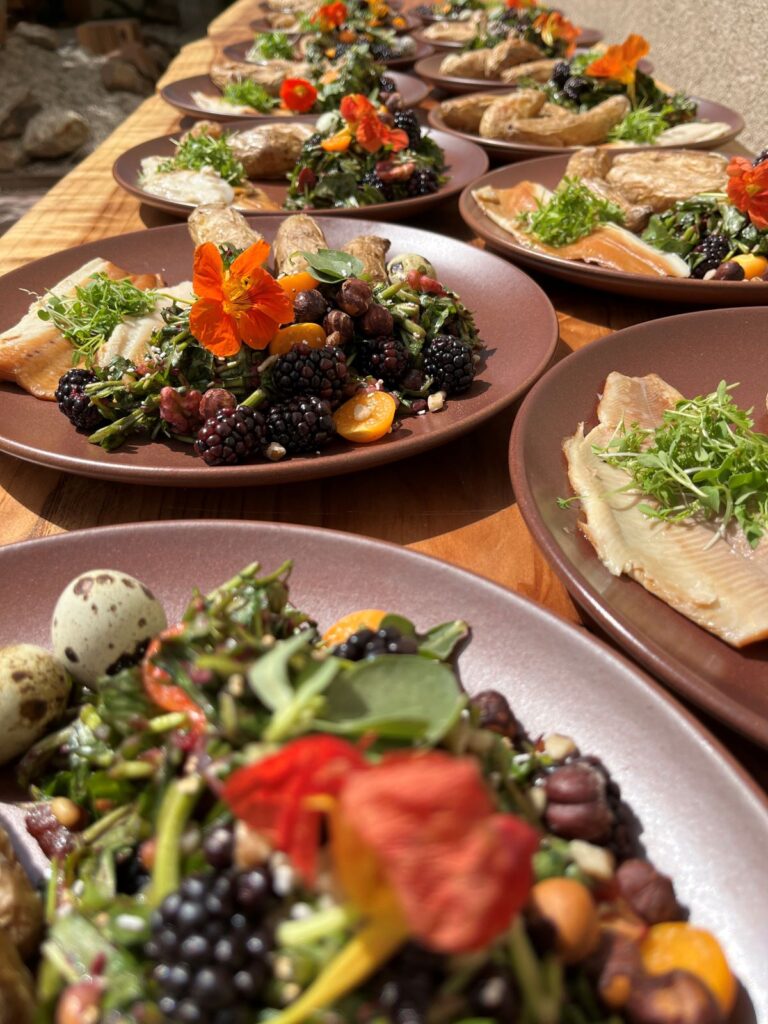
Reservation Dogs and Chris Cornelius offer two answers to David Treuer’s question as to how much is left of Indianness and how it lives in the present. But when Treuer posed this particular version of his question, he was not writing about art, architecture, or television but about food, more particularly about the Sioux chef Sean Sherman, whose restaurant Owamni in Minneapolis, Minnesota would eventually light up the culinary world. (When I tallied the number of articles about Owamni since its opening in 2021 I lost count at around thirty.)
Sherman has described his mission as the decolonization of food, omitting settler ingredients such as wheat, dairy, and cane sugar to focus instead on the indigenous foods of Mni Sota Makoce (Minnesota)— berries, beans, sorrel, squash, corn, elk, duck, bison, and true wild rice. It makes more than nostalgic sense since, as Treuer points out, the subjugation of Native culture was accomplished in large part by killing its food: obliterating bison, limiting fishing rights, depleting salmon with man-made dams, and removing inhabitants from lands where they had traditionally grown and foraged for ingredients.
It also makes ecological sense. Alice Waters may have started a food revolution in the twentieth century but she was several centuries behind Native Americans when it comes to local, seasonal, and sustainable foodways. Vincent Medina, the indigenous food activist behind Café Ohlone in Berkeley, California makes this and other impassioned observations when describing his restaurant’s mission: “We want people to look at our cultures from a lens of strength and triumphs, instead of losses and defeats.”
He and Louis Trevino, his co-owner in the restaurant, could not have a better venue for pursuing that mission. Café Ohlone occupies the courtyard in the Hearst Museum of Anthropology at the University of California, Berkeley, an institution with a vexed history when it comes to the Ohlone, the territory’s original inhabitants. In 1925 Alfred Louis Kroeber, a cultural anthropologist at Berkeley, declared the tribe culturally extinct. Following this, the tribe lost its federally recognized status and members were forced to vacate ancestral lands.
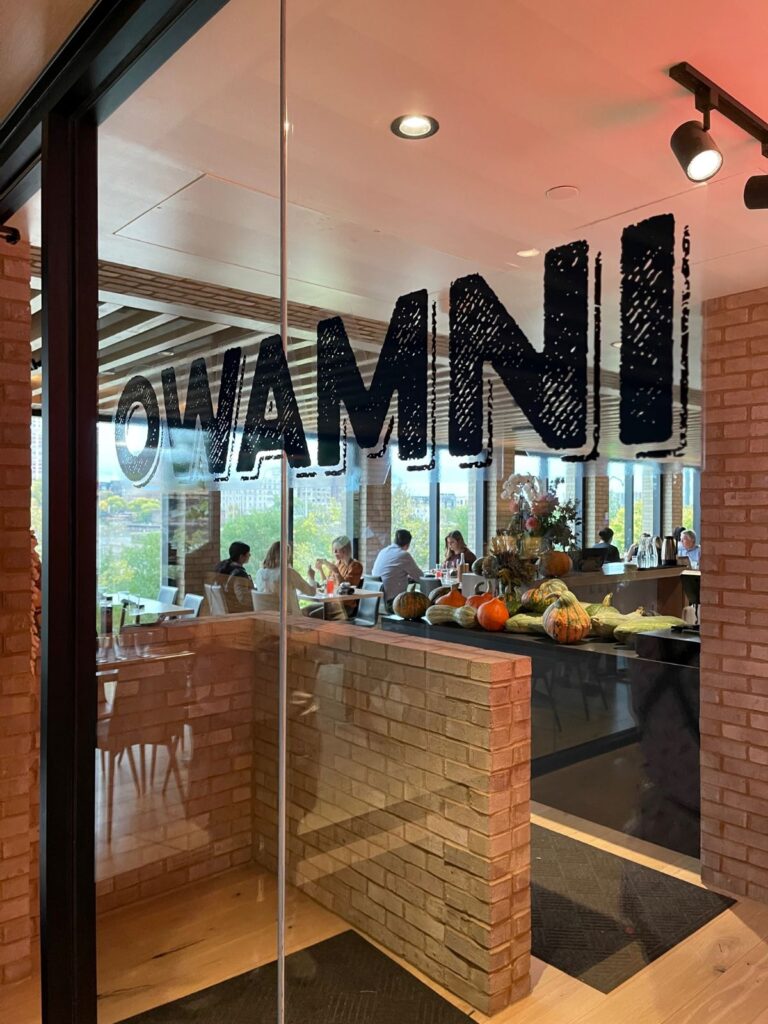
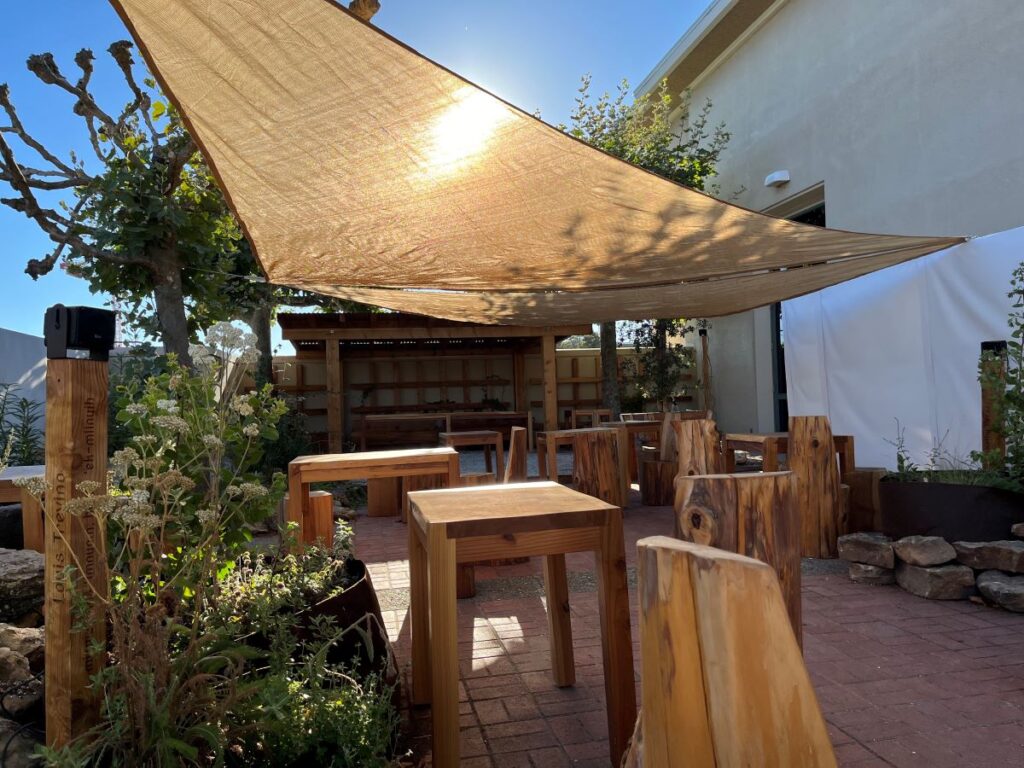
But more than one hundred years later, the Ohlone are very much still here, and so once again is their food. However in some important respects, as Medina knows, the success of the café has meant going back in order to go forward, learning about and sourcing traditional ingredients—Ohlone herbs, seasonal greens, Indian potatoes, meats, and fish and other seafoods local to the area—and creating an environment for it all with cultural programming, a native plant garden, and contemporary murals by Ohlone artists.
When I visited Sly Fox Den Too in Charlestown, Rhode Island, I wanted to ask Mashpee Wampanoag chef Sherry Pocknett what she thought of Ohlone and Owamni and their mission. Pocknett and her people have been foraging foods and feeding people for a long time, right back to that famous November feast in 1621. Unfortunately, she was recovering from an illness so I was only able to talk to some of the café’s happy diners, meet her family who staff it, and sample her corn cakes and cranberry preserves, which I very much liked.
Sly Fox Den Too is a no-frills place with a deep menu and a devoted following. It may live with a few of the foodways of the dominant culture more easily than the newcomers in Minneapolis and Berkeley ever will, but even if Amy Winehouse is on the sound system and hot dogs appear next to bison and three sisters rice on the menu, you sense that the passion for the living past is there and the sense of mission, too. I’m sure Pocknett would know how to feed and reach kids like those on Reservation Dogs. I’ll bet she already does.
Pocknett’s daughter Jade Galvin tells me they hope to open a bigger restaurant along with a living history museum in Preston, Connecticut. I hope they do because Pocknett is known for her short answer to questions like David Treuer’s: “We’re still here!”

